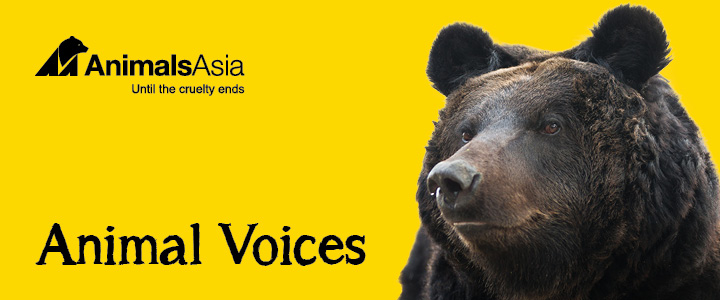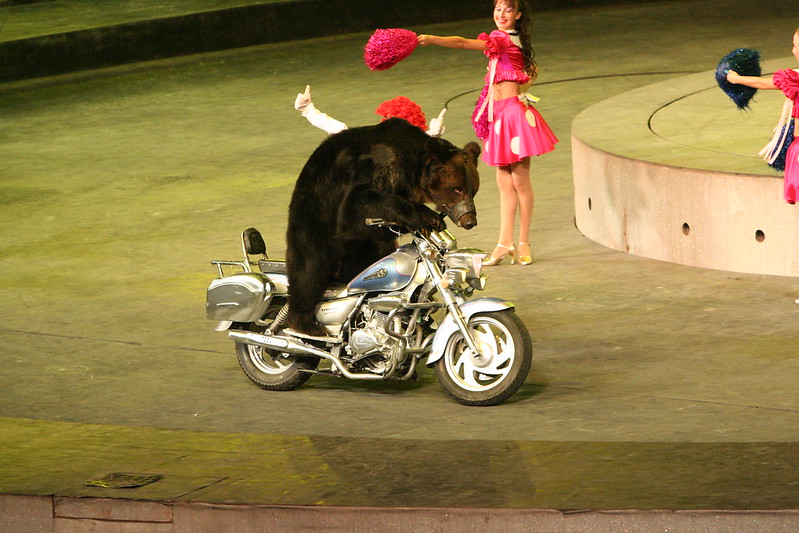Elephants on the highways and chimps in the streets show the madness of wild animal circuses must end
09 May 2018
In three years, the number of countries with wild animal performance bans has more than doubled, but cruelty and risk to the public remain a global problem.
By Animals Asia’s Animal Welfare Director Dave Neale
Last month a confused and scared chimpanzee was filmed strolling down a main street in the Russian city of Krasnodar.
We never found out what happened to “Richard” – the name given to the chimp – but we can make an educated guess that his escape, reportedly from a circus, was short-lived.
A chimpanzee such as Richard is likely to be twice as strong as an adult human, and a scared one such as Richard would cause significant injuries to a person had he attacked out of fear.
No further reports of Richard can be found and as his escape did not make the international press, we can assume that in this case the only victim was poor Richard himself.
Sadly, Richard’s case is not an isolated one.
While it’s true that wild animal performance has been on the back foot in recent years, with the number of countries with bans rising from 19 in 2015, to 47 today, we must acknowledge that the global movement against cruelty still has a long way to go.
Even the vast improvement of the last three years leaves about 75% of the world’s countries with no laws against wild animal performance – a shocking fact which also places citizens around the world at great risk.
Circuses transport dangerous wild animals among humans every day in countries where they are still permitted to operate.
China alone reportedly has over 400 circus tigers, 500 lions and 600 black bears all being used in shows. This is a lot of dangerous animals for us to accept living among us in makeshift transport and ill-regulated cages.
Cages in which abused animals are spending much of their time looking for ways to escape while being cared for by people with no formal training in how to ensure the safety of both the animals and the people that live around them.
Trail of terror
In March this year, a hippo escaped from a circus in Spain and was seen strolling down a street in La Garrovilla. In April, a motorway in Spain was closed due to a circus truck crash which killed one elephant and left three more walking dazed on the highway.
Going back further, an escaped circus tiger was shot dead on the streets of Paris last November in a desperate attempt to avoid human casualties.

These incidents are just a few of the many in which circus animals have escaped their cages and it was only through luck or violence that no humans were harmed by the wild animals being moved among them.
Sadly, not everybody is so lucky.
In March this year, a Saudi Arabian girl was injured by a lion during a “petting session” and in November 2017, two separate incidents of tigers escaping from Chinese circuses led to four people being injured, two of them children.
These incidents sit between the death of an eight-year-old girl killed by a circus tiger in Chongqing in 2014, and the death of a circus worker killed by his tigers in Fuzhou Zoo, China in March this year.
The trail of terror goes on, with six separate serious incidents of tigers, bears and crocodiles all attacking circus workers in China, Russia and Vietnam in 2017 alone.
The movement for change
In the countries where wild animal performance remains legal, it is hugely important that it is de-normalised and pushed to the margins.
In this regard, the recent closure of a macaque circus at a UNESCO-accredited reserve in Vietnam is hugely important. While the privately owned macaques will likely continue to perform elsewhere, the move sends a message to the entire country that keeping wild animals in tiny cages and forcing them to perform for entertainment is not acceptable.

Last week, TripAdvisor, the world’s largest travel company, announced it would no longer sell tickets for tours featuring wild animal performance. This brings them belatedly into line with all reputable travel agents and while their site continues to host listings for such attractions – and therefore allows them to self-publicise – the move is still to be welcomed.
Elephants, tigers, bears and other wild animals have been used in modern circuses since the 1800s but increasing awareness of the suffering they experience behind the scenes is leading to worldwide condemnation and ultimately the end of the cruel industry.
This is why we can’t stop speaking up for the voiceless. For the animals who suffer, for the innocent lives wrecked by accidents when wild animals escape in our towns and cities, we must work together to end the absurdity of allowing untrained people to bring scared and fearful wild animals into our communities in the name of entertainment.
BACK









